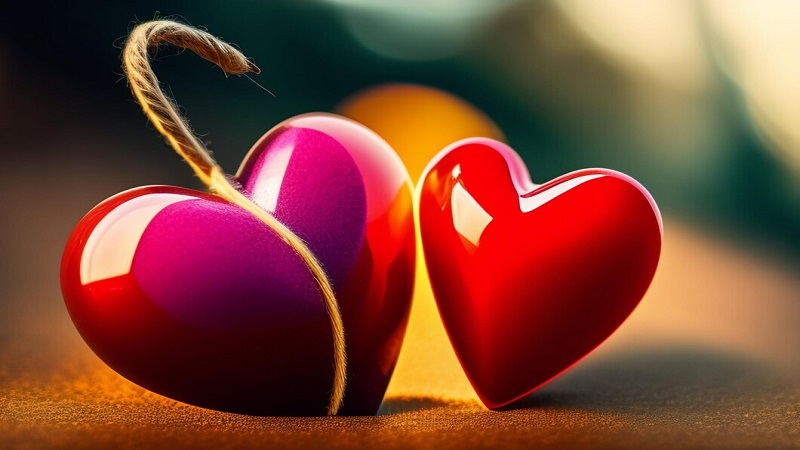Love and the heart are deeply intertwined, representing one of humanity’s most universal symbols. The heart has long been associated with love, serving as a powerful visual metaphor for affection, passion, and emotional connection. This article delves into the meaning behind love:ofa-97813c= heart exploring its symbolism, cultural significance, and contemporary relevance.
The Concept of Love: A Deep Dive
Love is a complex and multifaceted emotion that goes beyond mere romantic affection. It encompasses various forms, including:
- Romantic Love: This type of love is often characterized by deep emotional attachment, passion, and commitment. It is celebrated in countless poems, songs, and stories.
- Platonic Love: This form of love exists between friends and is based on mutual respect, understanding, and support. It plays a crucial role in providing emotional stability and companionship.
- Self-Love: Self-love is the practice of nurturing and valuing oneself. It is essential for mental health and well-being, enabling individuals to form healthier relationships with others.
Understanding these different types of love helps us appreciate the depth and breadth of human connection and the role love plays in our lives.
Heart as the Symbol of Love
The heart symbol has a rich history and significant cultural resonance. Ancient civilizations traced its origins back to associations with emotion, spirit, and life itself. They saw the heart’s rhythmic beating as a metaphor for life’s pulse and the emotional vigor linked to love.
- Historical Origins: Ancient Egyptians and Greeks viewed the heart as the seat of the soul and the center of emotion. Over centuries, this symbolism evolved, solidifying the heart as a universal symbol of love.
- Psychological and Cultural Perspectives: Psychologically, the heart’s association with love stems from its role in life and vitality. Culturally, the heart has been depicted in art, literature, and rituals as a representation of deep emotional bonds and affection.
Love:ofa_-97813c= Heart The Concept Explained
The title love:ofa_-97813c= heart is a modern interpretation that combines the concept of love with the heart symbol. It represents the idea that love and the heart link intrinsically, reflecting their deep connection in both symbolic and emotional contexts.
- What Does the Title Represent? The title suggests an equation that equates love with the heart, emphasizing their inseparable nature. This shows how the heart often symbolizes love in various forms of expression.
- How This Title Relates to the Symbolism of Love and the Heart: By combining these elements, the title captures the essence of love represented by the heart and reinforces the timeless connection between the two.
The Science Behind Love and the Heart
Love is not just an emotional experience; it also has tangible effects on the body. The science of love involves understanding how it impacts the heart and overall health.
- The Biological Mechanisms of Love: When we experience love, our brains release chemicals like oxytocin and dopamine. These neurotransmitters play a crucial role in creating feelings of attachment and pleasure.
- The Role of Neurotransmitters and Hormones: Oxytocin, often called the “love hormone,” is associated with bonding and trust. Dopamine, on the other hand, is linked to pleasure and reward. Together, these chemicals contribute to the physical sensations of love and its effects on the heart.
The Role of the Heart in Literature and Art
Throughout history, literature and art have used the heart symbol to explore and express the theme of love.
- Historical Depictions: From the sonnets of Shakespeare to Renaissance art, the heart has been a central figure in portraying love. These depictions often reflect the emotional depth and complexity of human relationships.
- Famous Works and Their Influence: Notable works such as “Romeo and Juliet” and various Romantic-era paintings have cemented the heart’s role as a symbol of love. These artistic representations continue to influence how we perceive and express love.
love= heart – Modern Interpretations
- In contemporary society, we reflect the concept of love:ofa_-97813c= heart in how we understand and communicate love.
How the Title Fits into Contemporary Understandings of Love: We often interpret love through digital symbols and emojis, showing how we express love in the digital age.The title aligns with this trend, combining traditional symbols with modern contexts. - The Impact of Digital Media on Love Symbols: Digital media has introduced new ways of expressing love, such as through emojis and social media posts. These new forms of communication continue to evolve the representation of love and the heart.

Love and the Heart in Pop Culture
Pop culture has embraced the connection between love and the heart, using it as a central theme in movies, music, and television.
- Representation in Movies, Music, and TV Shows: Films and songs often use heart imagery to convey romantic themes. For example, movies like “The Notebook” and songs like “Un-break My Heart” utilize the heart symbol to evoke emotional responses.
- Memorable Cultural References and Their Impact: Iconic references, such as heart-shaped jewelry or Valentine’s Day cards, highlight the enduring appeal of the heart symbol in expressing love.
The Heart Emoji: A Modern-Day Love Symbol
In the digital age, the heart emoji has become a ubiquitous symbol of love and affection.
- The Rise of the Heart Emoji and Its Popularity: The heart emoji has gained popularity as a quick and visual way to express love in texts and social media. Its various forms, including the red heart and the sparkling heart, cater to different expressions of affection.
- How the Emoji Reflects Modern Communication Trends: The heart emoji reflects how our communication has become more visual and immediate, allowing for quick expressions of emotion in a digital context.
Why Love is Essential for Human Connection
Love is crucial for forming and maintaining meaningful relationships. It plays a fundamental role in emotional and psychological well-being.
- The Psychological and Emotional Benefits of Love: Love provides a sense of belonging, reduces stress, and enhances happiness. It fosters deeper connections and contributes to overall mental health.
- How Love Enhances Well-being and Relationships: Loving relationships offer support and companionship, which are essential for navigating life’s challenges and achieving personal fulfillment.
love= heart – Breaking Down the Equation
The title love= heart encapsulates the equation between love and the heart, emphasizing their intrinsic connection.
- Analyzing the Title in the Context of Love and the Heart Symbol: This equation represents the idea that love is fundamentally linked to the heart, reflecting how love is symbolized and experienced.
- The Relevance of This Equation in Today’s World: In contemporary society, this equation remains relevant as it highlights the timeless nature of the heart as a symbol of love, despite changing modes of expression.
The Future of Love and the Heart Symbol
Looking ahead, the heart symbol will likely continue to evolve in response to cultural and technological changes.
- Potential Evolutions of Love Symbols: Future trends may introduce new symbols and representations of love, reflecting shifts in how we communicate and experience affection.
- How Future Trends May Influence the Heart Symbol: As technology advances, the heart symbol may adapt to new forms of communication, maintaining its relevance while integrating with modern contexts.
The Legacy of the Heart as a Symbol of Love
The heart symbol has endured through centuries, retaining its significance and appeal.
- The Enduring Appeal of the Heart Symbol: Despite changes in how we express love, the heart remains a powerful and universal symbol of affection and connection.
- How the Heart Continues to Inspire Across Generations: The heart’s symbolism continues to inspire art, literature, and personal expression, highlighting its timeless nature.
The Role of Media in Shaping Love and Heart Symbols
Media plays a significant role in defining and perpetuating our understanding of love and the heart.
- Media Influence on Perceptions of Love: Media shapes how we see and express love. Films, TV, and social media reinforce cultural norms and expectations.The Impact of Television, Film, and Social Media: These platforms constantly evolve love’s representation. They keep the heart symbol relevant and prominent in our lives.
Conclusion
The title love:ofa_-97813c= heart captures the essence of the relationship between love and the heart, reflecting their deep connection and significance. As we continue to explore and express love, the heart remains a timeless symbol of our emotional bonds and experiences. Whether through historical contexts, modern interpretations, or future trends, the heart will always be a powerful representation of love.
FAQs
1.What is the significance of the title love= heart?
The title signifies the fundamental connection between love and the heart, emphasizing how the heart symbolically represents love in various contexts.
2.Why is the heart a symbol of love?
The heart symbolizes love due to its historical and cultural associations with life, emotion, and vitality, making it a universal emblem of affection.
3.How has the heart symbol evolved in modern times?
The heart symbol has evolved through digital communication, with heart emojis and other visual representations becoming popular in expressing love and affection.
4.What is the role of love in human relationships?
Love is crucial for building and maintaining emotional connections, providing support, enhancing well-being, and fostering deeper relationships.
5.How will the heart symbol continue to represent love in the future?
The heart symbol will remain relevant as it adapts to new forms of communication and expression, continuing to symbolize the enduring nature of love. Read More beautydod.
